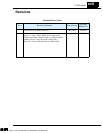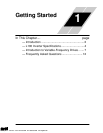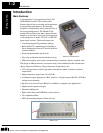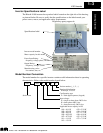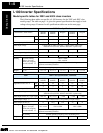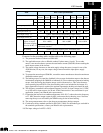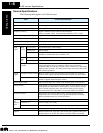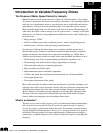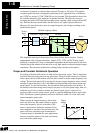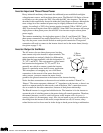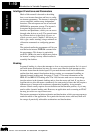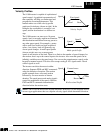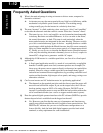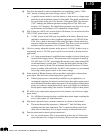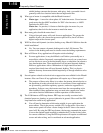
L100 Inverter
Getting Started
1–7
Introduction to Variable-Frequency Drives
The Purpose of Motor Speed Control for Industry
Hitachi inverters provide speed control for 3-phase AC induction motors. You connect
AC power to the inverter, and connect the inverter to the motor. You’re probably familiar
with the way a light dimmer works to vary the power sent to a light bulb, and thus the
light intensity. At a basic level, the modern inverter serves the same role for a motor.
Many industrial applications use AC motors of all sizes to do many different things. In
some cases, the motor connects directly to an AC power source — running at full speed
whenever it is on. However, many applications benefit from a motor with variable speed,
in several ways:
• Energy savings - HVAC
• Need to coordinate speed with an adjacent process - textiles and printing presses
• Sensitive loads - elevators, food processing, pharmaceuticals
Over the years, industry has found many ways to achieve variable speed when it
benefited the process. Solutions varied from mechanical (belts and gears), hydraulic
(pumps and motors), and electrical (two-speed motor windings, etc.) While these
solutions provided some control over speed, there were unwanted side effects as well:
• Wasted energy from losses in speed-adjusting mechanisms (gearboxes, etc.)
• Wasted energy from on/off control trying to approximate an average
• Noise from belts and gears or start/stop operations
• Messy machinery with fluid leaks
• High maintenance and/or unreliable components
• Could set the speed, but acceleration and deceleration was still uncontrollable
• Not enough speed levels
• Poor torque performance at low speeds
Most of the unwanted side effects came from mechanical or hydraulic machinery, and
could be solved with a purely electronic solution. But early electronic components had
reliability shortcomings due to the large currents and high voltages imposed on the
devices. However, the modern power components in use today have changed all that.
The state-of-the-art components in Hitachi drives provide all the benefits of speed
control, while overcoming the classical problems listed above.
What is an Inverter?
The term inverter and variable-frequency drive are related and somewhat interchange-
able. An electronic motor drive for an AC motor can control the motor’s speed by
varying the frequency of the power sent to the motor. For example, a particular motor
may be designed for 60 Hz operation. We say it is a synchronous motor if its speed of
revolution is directly related to its power input frequency. When the motor design is
synchronous, a variable frequency drive is able to control the speed by controlling the
frequency.
Technologies Inc.
Toll Free: voice: 1-877-539-2542 fax: 1-800-539-2542 www.mgitech.com



